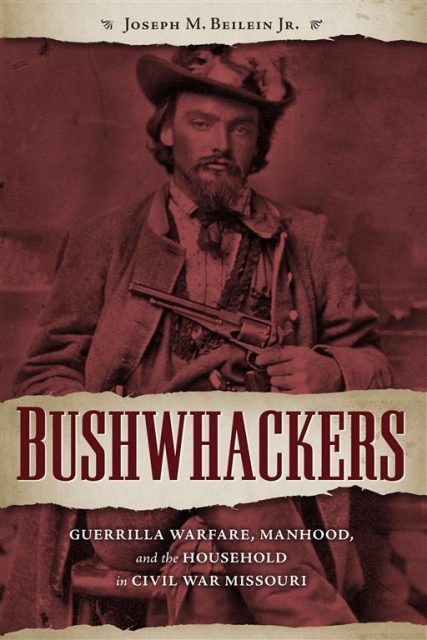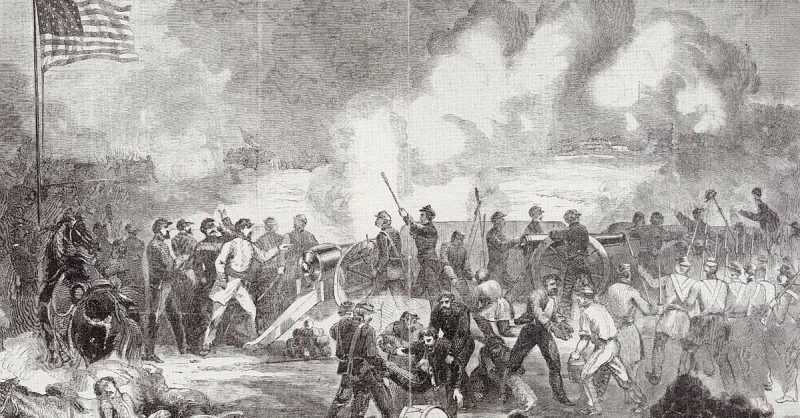The historiography of the guerrilla phase of the Civil War has been on the increase in recent years with notable works by Michael Fellman and Daniel Sutherland, among others. Indeed, author Joseph Beilein Jr., of the publication under review–a contribution to the Kent State University Press’s series of The Civil War Era in the South–was also part and parcel in the recent release of an anthology entitled The Civil War Guerrilla: Unfolding the Black Flag in History, Memory and Myth.
With this study, Beilein has attempted to delve deeply into the psyche of Missouri guerrillas in an effort to provide a rationale for their actions and what made them what and who they were. In the event, according to the author, it was not nearly so much a matter of supporting the overall and overarching policies and objectives of the Confederacy as it was one of reinforcing the manhood, civil and domestic traditions, beliefs and perspectives of these irregulars who preferred to stay and fight close to home to protect their (extended, in many cases) kith and kin, homes and hearths, from the invading “mercenary hordes” represented, in many cases, by anti-slavery immigrant Germans of the Union army and state militia.
Consequently, this is not a history of guerrilla warfare in Missouri although each chapter recounts an event which provides context to the topic under discussion. Beilein has divided his book into eight chapters which cover a wide range of topics which were instrumental in explaining the mindset of these guerrillas and how they were able to operate and maintain their efforts to resist the inroads of the government in its attempt to combat what this authority saw as usages incompatible with the rules of civilized warfare.
The eight aforementioned chapters provide analysis on and description of each factor which guerrillas required and on which they relied in their war effort. These factors include the support system, logistical, moral and emotional from family and friends, right down to their reliance on horses for transportation and carrying multiple pistols for in-close fighting (when not fleeing to fight another day) to their style of combat tactics and non-uniformed manner of dress which, in spite of its lack of uniformity, never seemed to cause these guerrillas to mistake friend from foe.
The end result was relatively small bands of men, mostly related by blood and marriage, who roamed the countryside, attacking minor outposts, capturing pickets, scouts, messengers and supply trains and generally wreaking havoc before melting back into the local population, much as Mosby’s Rangers did in Northern Virginia. Along the way, many of their efforts were also personal inasmuch as the Federal government tried to neutralize their threat by banishing their families from the state and/or burning their homes, taking or destroying crops and even farm implements to prevent crop harvests. Not surprisingly, threats to women and children were high on the list for reprisals from these irregulars who saw these as threats to their manhood, self-image and way of life.
To his credit, the author has also provided five appendices which add further context to his contention that extended families many times were responsible for the ongoing effort–never really successfully countered during the war–to take the fight to the enemy. Having identified two main guerrilla networks, Fristoe and Holtzclaw, statistical sampling shows that, in several Missouri counties, a significant percentage of the men, and their women, either directly participated in or at least logistically supported these networks. The last appendix comprises raw data from the Federal Census of 1860 which lists heads of households, personal wealth, ages, family composition and other information on some of the wartime guerrillas.
Photographs and illustrations are drawn from a variety of sources, including John Edwards’s 1879 tome on guerrilla warfare which largely mythologized Bloody Bill Anderson and William Clarke Quantrill, William Connelley’s biography of Quantrill, Harper’s Weekly, Leslie’s Illustrated Paper and the Missouri Historical Society. The maps, provided by Andrew Fialka, are helpful in showing that each of the networks described above was, to a certain extent, its own “confederacy” which contributed much to their success.
With extensive research in primary and secondary sources, this publication not only provides a possible explanation for the wartime guerrilla’s attitude, perspective and subsequent actions but is also a fine addition to ongoing contributions to the field of asymmetrical warfare in the Civil War. It is recommended.

Bushwhackers: Guerrilla Warfare, Manhood, and the Household in Civil War Missouri
Author: Joseph M. Beilein, Jr.
Kent, Ohio: The Kent State University Press, 2016.
304pp.
Reviewed by Stuart McClung
